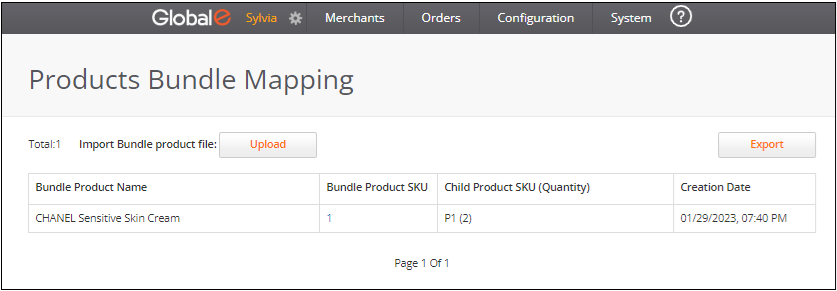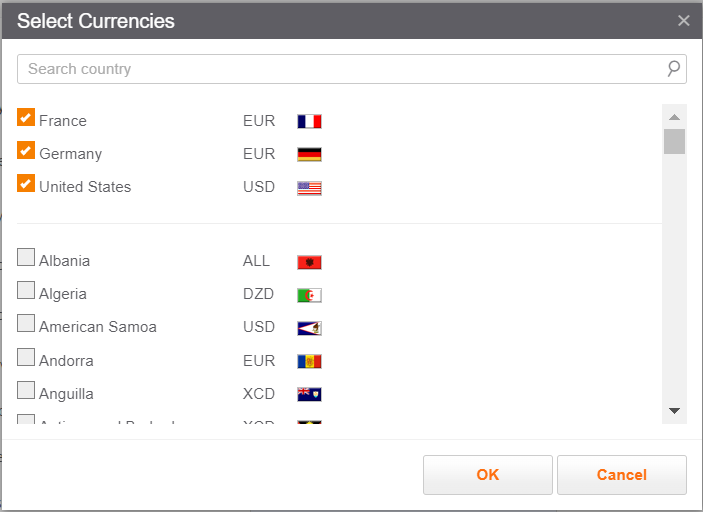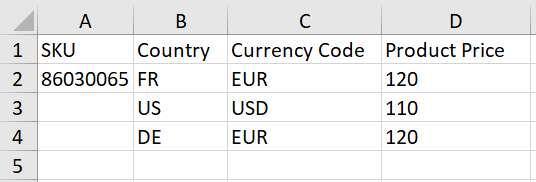Product Management
Restricted Products
Restrictions Due to Regulatory Issues
Product restrictions due to regulatory issues are based on custom regulations in the destination country. Global‑e generally initiates these restrictions at the product, category, or sometimes at the universal Harmonized System (HS) codes level.
The Harmonized Commodity Description and Coding Systems (HS) is an international nomenclature for the classification of products. It allows participating countries to classify traded goods on a common basis for customs purposes. At the international level, the Harmonized System (HS) for classifying goods is a six-digit code system.
For example:
Wooden products are regulated in Australia.
Sunglasses required an FDA permit in the US. Merchants that do not have the required FDA permit are not allowed to sell sunglasses to the US.
Product Bundle Mapping
You can create product bundles to group products so that they can be sold together, The Product Bundle Mapping screen lets you import and process products in bundles and handle the mapping to a parent SKU on the Bundle Product Management page. This screen establishes a relationship between a bundle product that exists in the products table with the bundled child SKUs, as they are expected to pass through the Get Shipping Documents (GSD) request.
To import products in bundles:
Open the Global‑e Merchant Portal.
Select a merchant from the Merchant menu.
Download the Bundle template file by clicking File Format Example.
Populate the Bundle template file with the following values:
BundleSKU - The parent SKU as it exists on the products table.
ChildSKU - The child SKU as it should be passed by the merchant in the GSD request.
Quantity - The quantity of the child SKU items for this bundle.
Go to Merchants > Product Management > Product Bundle Mapping.
If the import succeeded, the following information is shown, containing all the saved records:

Product Price Per Currency Feed
The Product Price per Currency Feed enables you to create a feed of your products with their prices in the foreign currencies of your choice.
This feed can be used for your marketing needs, whenever international prices are required, for example, Google shopping feed.
To prepare your Product Price file:
From the Global-e Merchant Portal, go to Merchants > Product Management > Product Price Feed.
The Product Price per Currency Feed screen opens.

Download the SKU Sample File by clicking the File Format Example (next to the browse button).
Populate the file with the following values:
Note: You can list the values on separate rows or separate the values with commas; the file can contain up to 1000 SKUs.
SKU
Your product SKU as it appears in your product catalog.
Product Price
Your product price in the original merchant currency (including VAT)
Price Original Currency
3-char currency code of your products
VAT Rate
The VAT rate in your country that is applicable to your product in per cent (without the % sign)
Save your file in one of the following formats: Excel, CSV, or txt.
Generate your Feed
To upload and generate your file:
In the Product Price per Currency Feed screen, upload your SKU file:
Click Browse to retrieve and select the file you have prepared.
Choose currencies by country:
Click List of Currencies OR Choose,
The Select Currencies screen opens.
Select one or multiple currencies to use for your product price conversions.
You can choose up to 10 different currencies.
To search for or filter currencies, you can use the Search country field.
The selected currencies are selected and saved.

To remove a currency, clear the box next to the currency.
Choose output file destination:
Select the way you prefer receiving your file containing the converted product prices:
Download the file to your PC (one time)
The file is downloaded and saved once on your PC.
Send a daily file to this email address
Enter your email address.
The process runs daily, generates the file every 24 hours (with updated prices), and sends the file to the requested email destination you provided.
Send a daily file to this SFTP site
Enter the server address: sftp.merchantdoamin.com
Enter the folder name.
Enter your username
Select Use Password or Use Private Key
If you select Use Password, enter a password.
If you select Use Private key, click Browse to upload your key file.
The process runs daily, generates the file every 24 hours (with the converted prices), and sends the file to the requested SFTP server destination you provided.
Click Generate Feed to convert your products to the selected currency prices.

If you have chosen to receive the file daily option, when you next log in to this screen, you can stop the process and generate a new file with different SKUs.